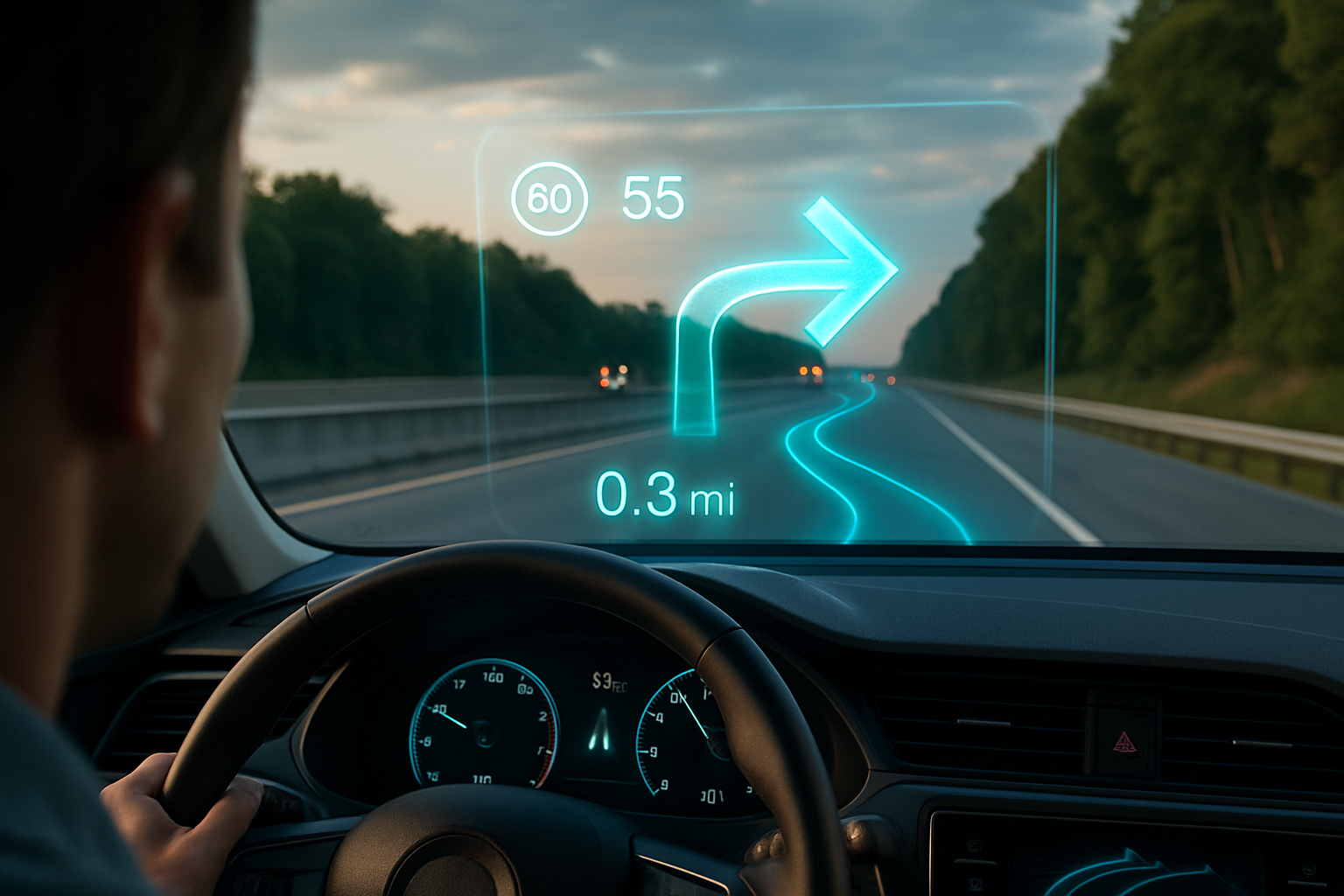Holographic Heads-Up Displays: The Future of Driver Information
A futuristic sports car zips down a winding mountain road. The driver's eyes never leave the road, yet they're acutely aware of their speed, navigation, and vehicle diagnostics. This isn't science fiction – it's the reality of advanced holographic heads-up displays (HUDs), a technology poised to revolutionize how we interact with our vehicles and the road ahead.

Understanding Holographic HUD Technology
Holographic HUDs utilize advanced optics and projection systems to create the illusion of 3D images floating in space. Unlike traditional HUDs that display information on a flat plane, holographic systems can present data at various depths, allowing for more intuitive and less distracting presentations of crucial information.
The Benefits of Holographic HUDs
One of the primary advantages of holographic HUDs is their ability to present information in a more natural and intuitive manner. By projecting data at different depths, these systems can prioritize information based on urgency or relevance. For instance, navigation arrows might appear closer to the driver’s eye line, while less critical information like the current song playing could be positioned further away.
Enhanced Safety Through Augmented Reality
Holographic HUDs are opening new possibilities for augmented reality (AR) in vehicles. These systems can overlay navigation information directly onto the road ahead, highlighting turns, potential hazards, and even pedestrians in low-visibility conditions. This seamless integration of virtual and real-world information can significantly enhance driver awareness and reaction times.
Challenges in Implementation
Despite their potential, holographic HUDs face several hurdles before widespread adoption. The technology requires precise calibration to function effectively across various lighting conditions and viewing angles. Additionally, the cost of these advanced systems currently limits their availability to high-end vehicles, though economies of scale are expected to bring prices down over time.
The Role of AI in Next-Generation HUDs
Artificial intelligence is set to play a crucial role in the future of holographic HUDs. AI algorithms can analyze driving conditions, traffic patterns, and driver behavior to determine what information should be displayed and when. This adaptive approach ensures that drivers receive only the most relevant data, minimizing distractions and information overload.
Integration with Vehicle-to-Everything (V2X) Communication
As vehicles become more connected, holographic HUDs will serve as a vital interface for V2X communication. These displays could visualize real-time data from other vehicles, infrastructure, and pedestrians, creating a comprehensive picture of the driving environment and potentially preventing accidents before they occur.
The Impact on Vehicle Design
The advent of holographic HUDs is influencing vehicle design, particularly in terms of windshield and dashboard layout. Manufacturers are exploring ways to integrate these systems seamlessly into the vehicle’s architecture, potentially leading to more minimalist interiors as traditional gauges and screens become obsolete.
Looking Ahead: The Road to Widespread Adoption
While holographic HUDs are currently limited to luxury vehicles, their potential benefits for safety and user experience are driving rapid development. As the technology matures and costs decrease, we can expect to see these systems become standard equipment in a wide range of vehicles, fundamentally changing how drivers interact with their cars and the road.
In conclusion, holographic heads-up displays represent a significant leap forward in automotive information systems. By presenting crucial data in an intuitive, three-dimensional format, these technologies promise to enhance safety, reduce driver distraction, and pave the way for more advanced driver assistance features. As the automotive industry continues to evolve, holographic HUDs will undoubtedly play a central role in shaping the future of driving experiences.





